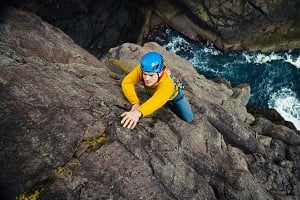
Climbing videos, writing and other content typically fail to engage with the bodily experience of the activity, argues artist and philosophy PhD graduate Dr Andrew Whall.
What is the problem with how climbing is represented in its media? In my opinion, the problem is primarily that the output rarely portrays a holistic view of the climbing experience—one which connects both the internal and external (mind and body).
In philosophy, the widely held Cartesian view of perception is based on the assumption that the mind is an internal space, separated from the external world of objects that we see around us. In other words, it embraces a false dichotomy between inside and outside—internal and external worlds.
Cartesian dualism as outlined above was challenged in the early part of the 20th century in the works of Husserl, Heidegger, Sartre, Merleau-Ponty and others. These philosophers instead posited a phenomenological (of or relating to someone's awareness or experience of something rather than the thing itself) study of consciousness as experienced from the first-person point of view or perspective, which is what interests me in this article.
Maurice Merleau-Ponty argues that any theory or representation that separates representational minds and represented objects will not allow us to understand the nature of our actual experience in the world. Merleau-Ponty argues that vision and movement are united in a body that moves- and-sees as part of one complete process. Evidence indicates that our experience of the world concerns all our sensory perceptions: sight, sound, as well as haptic and proprioceptive senses.
But what about the idea or ambition that the picture or photo might be a representation of the experience rather than the object? I guess the motivation to look beyond convention, is that in an activity like climbing, which I think most would agree is a rich and fully engaging experience of body, mind and the senses, we might hope that the representations of that activity would convey that experience with a similar complexity. However a failure at this conjunction is often apparent. It is also possible to bemoan the narrow form or shapes that the representations take. There are of course alternatives to conventional representations.
Excursions into more experimental forms of climbing media do take place, but they are often more concerned with using an existing art form to engage or represent climbing. For example, dance or theatre may use climbing as a subject. Dancers may use ropes and harnesses and perform on a wall or rock. This is fine of course and adds diversity and richness to our current representations. Yet they are in effect merely a joining up of climbing and dance and for that reason may appear clumsy. I would propose representations that can distance themselves from merely representing elements of the climbing and I would favour art forms that explore the experience itself rather than merely seeking to represent it.
Q. Can phenomenology (a philosophy of lived experience) help?
Yes, because a phenomenological methodology favours a bodily experiential approach. This helps, because it allows a focus on bodily experience rather than on representations of a body having experiences. If we accept that climbing is indeed a bodily experience, then surely we should be striving to represent that, rather than settling for a partial representation.
It has to be said that phenomenology has been taken up as an all-embracing philosophy for the mindfulness/wellbeing industry. I would argue that there is a kind of misunderstanding here. Phenomenology can indeed be used as a kind of tool kit for re-evaluating lived and bodily experience. This is all well and good and we can imagine climbers employing this strategy to have an experiential day out and arriving home with their bodies throbbing and fizzing from all that lived experience. But we still have the problem of how we represent these experiences and we still avoid teasing out the subtleties of the experience in a clumsy and conventional series of images and texts, that are often destined for the Instagrammable and social platform-oriented outcomes.
However, what phenomenology can offer is a methodology to bracket or frame experience. What it can't do is prescribe what such a phenomenologically driven representation of bouldering might look like. Well that's all well and good, but where do we go from here?
Firstly I want to point out that I'm not advocating an eradication of conventional representations. They have many, varied and multiple uses, from the everyday and prosaic topo line drawing, beta videos, to fine art photography and paintings. It has to be remembered that I am suggesting we think of these as partial representations that tend towards favouring the object, whereby the climber and the rock are represented objectively from a perspectival position. They are not representations of the actual climbers' experience.
Currently, my media feeds are chock full of videos with music soundtracks, mostly quite frankly dull as dishwater and telling me nothing about the experience of the climbing body, the climber. Of course there are instances that defy this paucity, for example the mini documentary of Nalle on 'Burden of Dreams' tells us quite a lot about his experience. But really this is still a relatively conventional piece of filmmaking. If I had to choose between an account of— let's say—Johnny Dawes and the ladybird on Gaia or an athlete's several-hundred-word tribute to all the people that helped them achieve their dream, hopefully at this point in the article I don't need to say which I would prefer.
Why isn't a broader canvas encouraged? Well, quite simply, climbing these days is in the thrall of media and money. A fast-edit, snappy bouldering vid is of course a better vehicle to sell something: shoes, drinks or whatever. A rambling monologue with some drawings, images and video is at the moment unlikely to sell anything.
My guess is that most people's experiences of climbing are not mirrored or represented in conventional media. I believe that an increasing effort to appeal to mass and mainstream audiences with often sensationalist (huge dyno!! scary fall!!) etc. and dumbed-down output to attract eyeballs has become a deterrent to experimentation.
So are there any examples of experimentation within the contexts I have described above? Indeed there are. In 2015 I finished a PhD thesis 'The problem of representing the 'bouldering' experience as it exceeds conventional forms of representation' in which I hope I argued relatively successfully that bouldering was in fact an art form. Since that time things have inevitably changed. Currently there are people practising bouldering as an art form consciously and often less consciously. Yet a much higher percentage of boulderers are now participating in a sport and maintaining the growing fashion of calling themselves athletes.
What is the situation right now? It depends on how and from what point you look, of course. However, if our research is a scan of current trends and media coverage on the Internet and social media platforms then the answer is that it is definitely a sport (a current topic of discussion in a UKC Forum thread attached to John Porter's related op-ed 'Climbing has Succumbed to Numbers'.)
One counter to this would be some podcasts, including the Careless Talk podcast, in which I hear quite often from presenters and guests a desire to move away from 'numbers' and to focus more on having a 'good experience'. However the toolkit or language needed to frame the experience isn't yet extensively developed.
I believe the problem lies in the dichotomy or tension between bouldering inside and bouldering outside. It is not particularly a new idea nor ultimately that interesting. However, there are massive differences. What concerns me is the rupture between what I see as a creative act, i.e. bouldering outdoors and a simulacrum that is practised indoors.
What is emerging here as I see it is that the sport that is being practised is largely derived from the art, i.e. bouldering outside. Specifically, a boulder problem outside is the result of a creative process (even more so when opening a new boulder) and is arguably an art that seems to have become a little neglected. I simply want to redress this balance and argue the creativity apparent at this point needs to be acknowledged and celebrated and represented for what it is, an art form. And the art, (the representations) would ideally be then given a chance to become more sophisticated and informed.
What then would the art give the sport? The prime example is that it gives creativity, opening new boulder problems outside. Secondly indoors the contribution is both problem setting on walls and in the problem solving from the climbers. It is the creativity that ties these acts together, it is the creativity that nurtures the sport. If, however, there is no support or recognition of the role of creativity in this practice/activity/sport, then what will happen?
Route setters, I would hazard a guess, have all climbed outside and have bouldered at places like Fontainebleau, Magic Wood, Rocklands, Bishop to name a few top class venues. The knowledge they gained from this experience they then bring inside into the climbing walls and gyms and into the creation of the problems/boulders. What will happen when these boulder setters retire, give up? Problems will then be set by a younger generation who have climbed extensively or predominantly inside.
Their knowledge of movement, their creative understanding of what a boulder can be and how their body fits with that boulder will be derived from an increasingly narrow field. Ultimately this will undo the sport, making it increasingly anodyne and boring, at least for those people that understand bouldering as art, or even the people who have a flickering remembrance of an experience that constituted more than a blob to blob hop, skip and jump.
It is this kind of imbalance in the media of representations of bouldering that I have tried to address in my PhD and through the occasional foray into the art world, digital platforms and publishing. My call would be for less prescriptive, less conventional, less formulaic and for more experimental and genuinely challenging representations of the climbing and bouldering experience to be entertained in 'our' media. More art, less sport.
Read Andy's PhD thesis.




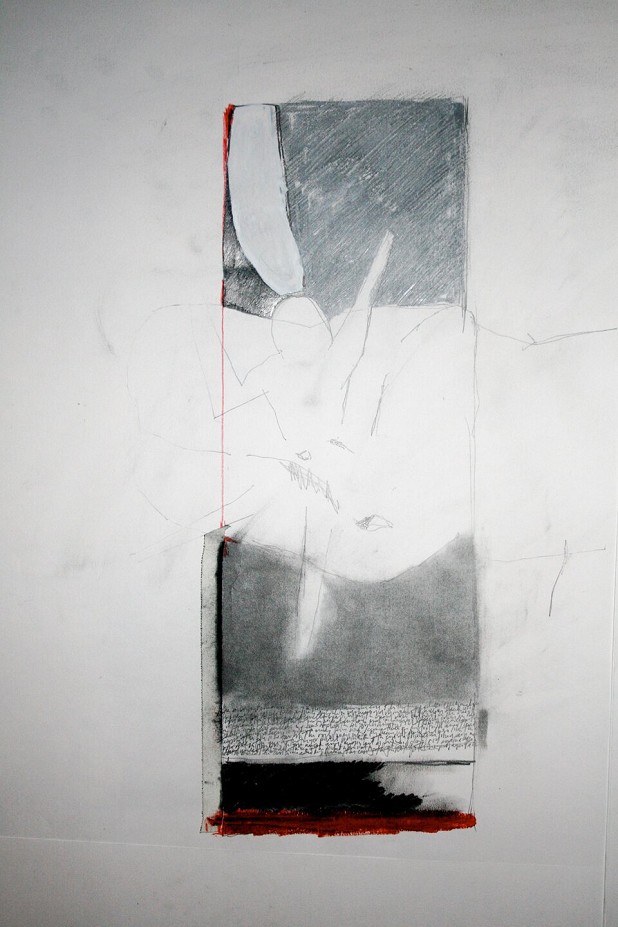

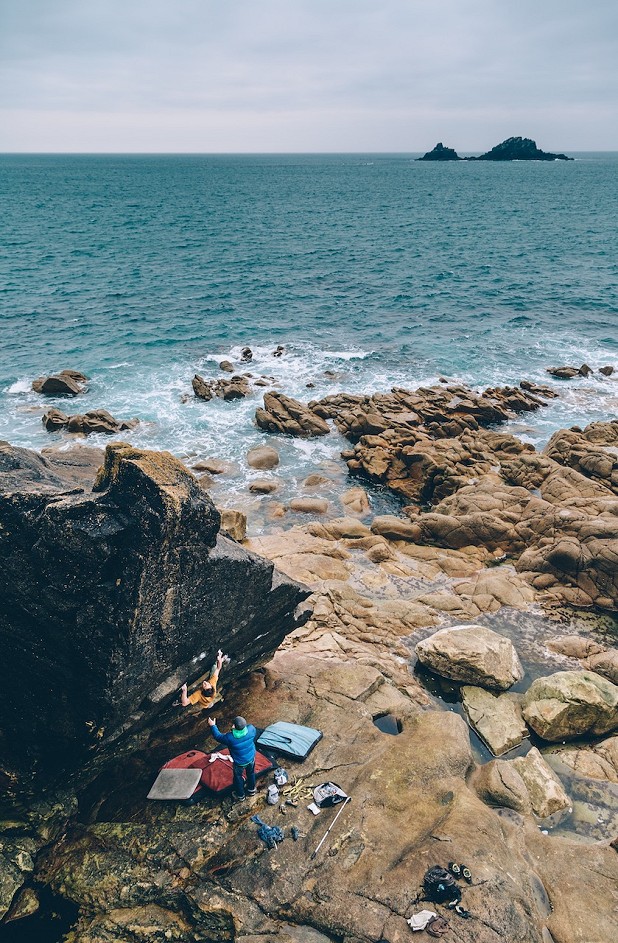
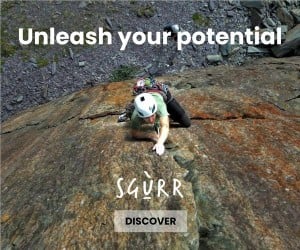
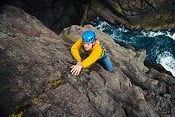
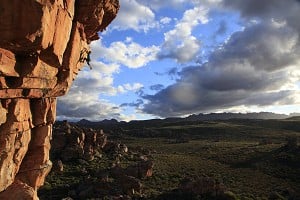
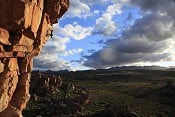


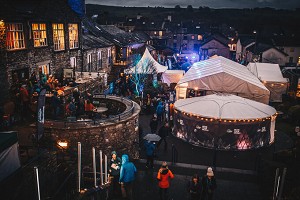
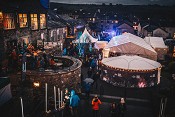
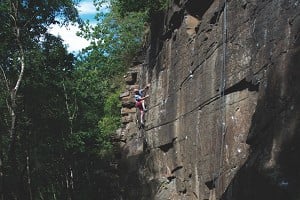
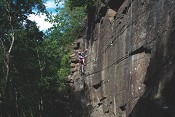
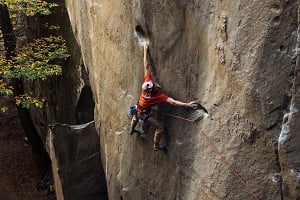
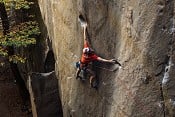
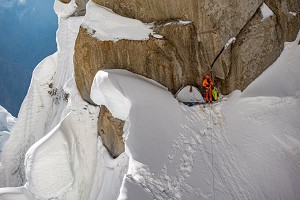
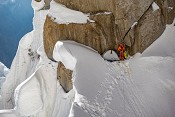
Comments
Yawn. (Sorry.)
OK, which aspects of Maurice Merleau-Ponty's theory do you take issue with?
Excellent article, thank you. I totally agree with your thesis.
How does Ed Drummond, with his unique style of writing, plus his performances (which included climbing) fit into the argument made here ?
Love it. Bolder and more sincere than my efforts in the past.
Your works makes attempts of mine of 'capturing the hills' look Kitsch in comparison.
Keep at it 👍👍👍👍👍